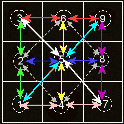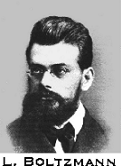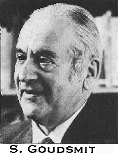Several numbers in introduction
 About a hundred years ago, Albert Einstein - at that time an unknown clerk in the Zurich patent office - published his first series of articles, which fundamentally changed the view of physicists and, consequently, other scientists of the observable world. Numerologists, who hold a universal key to all knowledge, undoubtedly noticed that the number five played in Einstein’s life and the history of his discoveries and their consequences a prominent role: About a hundred years ago, Albert Einstein - at that time an unknown clerk in the Zurich patent office - published his first series of articles, which fundamentally changed the view of physicists and, consequently, other scientists of the observable world. Numerologists, who hold a universal key to all knowledge, undoubtedly noticed that the number five played in Einstein’s life and the history of his discoveries and their consequences a prominent role:
True, it does not appear in the year of his birth (1879) but the sum of its digits is 25, thus 5 2 ; in the year 1905, he obtained his doctorate for the thesis “On the new determination of the size of molecules” ; in
the same year, he published three articles, which had been gradually recognized as a breakthrough in fundamental physics: one on electrodynamics (renown later as fundamentals of the special relativity theory), the second one interpreting the photoelectric effect and introducing the concept of a photon, and the third one developing in a fundamental way the Boltzmann and Gibbs concept of statistical mechanics. In 1915, he published an article laying foundations of his general relativity theory.
|







 In 1925, Uhlenbeck and Goudsmit proposed the idea of electron spin, as a mediated consequence of his discoveries. Unfortunately, I cannot say that Paul Dirac formulated his relativistic quantum mechanics in a year containing the numeral 5 (it happened in 1928 which is however numerologically 4 x 5), but it took him five years to come to the theory of electron holes and positrons. And, last but not least, Albert Einstein died 1955.
In 1925, Uhlenbeck and Goudsmit proposed the idea of electron spin, as a mediated consequence of his discoveries. Unfortunately, I cannot say that Paul Dirac formulated his relativistic quantum mechanics in a year containing the numeral 5 (it happened in 1928 which is however numerologically 4 x 5), but it took him five years to come to the theory of electron holes and positrons. And, last but not least, Albert Einstein died 1955.